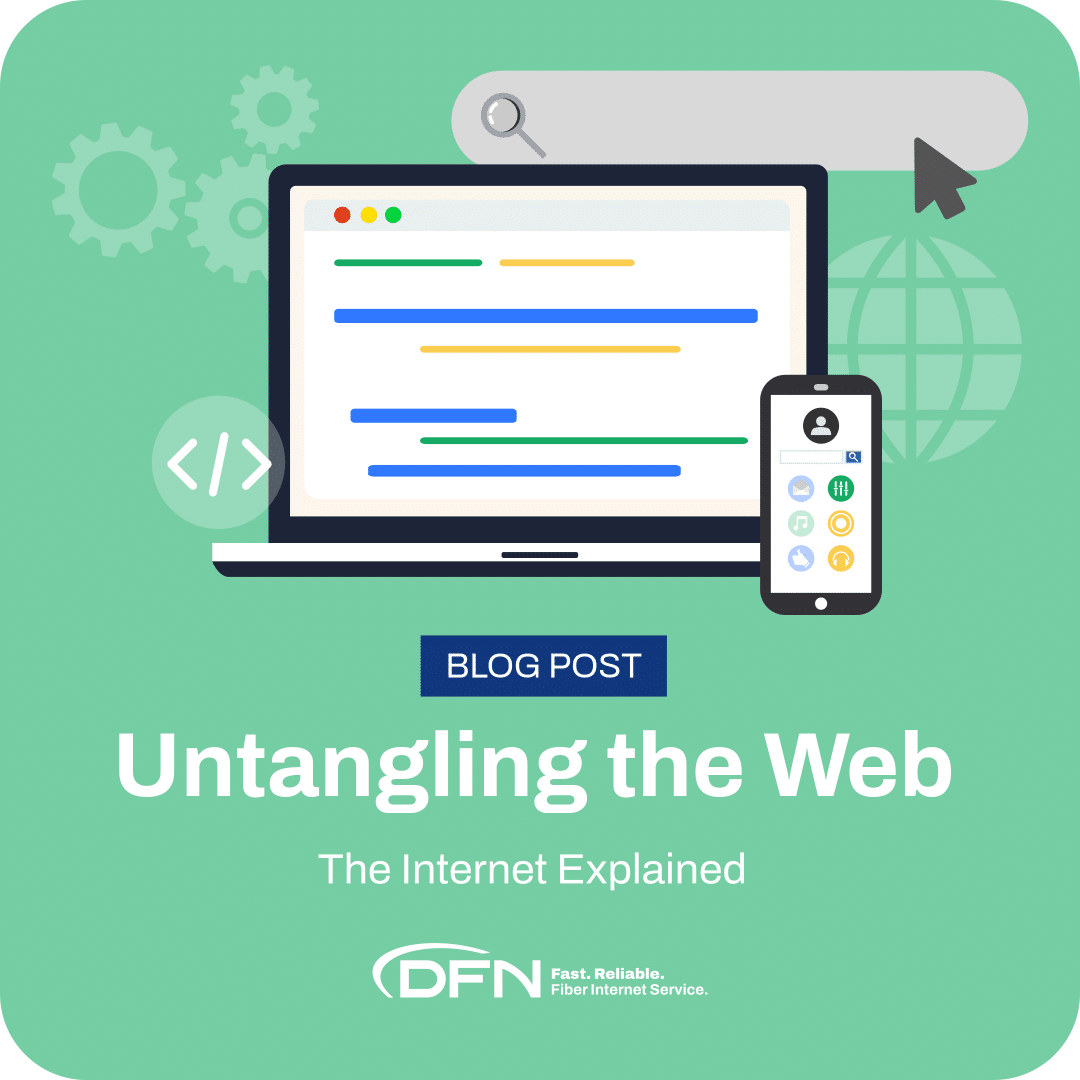The Internet: Our Invisible Lifeline
We use the internet every day — to stream, work, shop, video chat, and more. But few people stop to think about how it all actually works.
In this quick guide, we’ll break down the basics:
- What the internet really is
- How it connects to the World Wide Web
- The roles of browsers, search engines, and websites
- And where DFN fits into the bigger picture
Let’s untangle the web.
What Is the Internet?
The internet isn’t just the connection DFN installed in your home — that’s the delivery system. The internet itself is a massive global network that connects billions of devices, including computers, phones, servers, and more.
Each device connected to the internet has an IP address and can send or receive information across this network.
According to the Internet Society:
“The global Internet consists of tens of thousands of interconnected networks run by service providers, individual companies, universities, and governments.”
That means the internet is really a network of networks — and it’s been in the making for decades.
A Brief History
- 1960s: ARPANET was developed to connect universities and labs
- 1983: TCP/IP became the standard for allowing smaller networks to connect
- Today: Over 5 billion people use the internet globally
What Is the World Wide Web?
While the internet connects devices, the World Wide Web (WWW) connects information.
The Web is a system of linked documents, websites, and media that runs on top of the internet. You access the Web through a browser, which pulls information stored on web servers and displays it on your device.
A Bit of History
- 1989: Tim Berners-Lee proposed the WWW at CERN
- 1993: CERN released the Web to the public
- Today, the Web powers most of our digital experiences — from websites and news to social media and video streaming
What Is a Web Browser?
A browser is the software on your phone, laptop, or desktop that lets you access the World Wide Web. It requests and displays the content you want by turning code into readable web pages.
Popular browsers include:
- Google Chrome
- Apple Safari
- Microsoft Edge
- Mozilla Firefox
- Opera
Fun fact: Tim Berners-Lee also created the first browser in 1990, called WorldWideWeb (later renamed Nexus). The first browser to show text and images together was Mosaic, released in 1993 — a major turning point in web usability.
What Is a Search Engine?
A search engine is a website that helps users find specific content on the web. While browsers are how you access websites, search engines are how you discover them.
Here’s how it works:
- A search engine indexes billions of web pages
- When you type in a search (like “apple pie recipes”), it searches its own database — not the entire internet — to find relevant results
- It ranks those results based on factors like keywords, page quality, and popularity
You access search engines through your browser. Some (like Google Chrome) even let you search directly from the address bar.
Popular search engines include:
- Bing
- Yahoo!
- DuckDuckGo
New AI tools like ChatGPT, Perplexity, and Microsoft Copilot are also emerging as helpful tools to summarize and answer questions — though they aren’t traditional search engines.
What Is a Website?
A website is a collection of interlinked web pages with information, tools, or services — anything from a blog or restaurant menu to a streaming platform or online store.
Websites live at specific URLs (web addresses), and browsers use those URLs to retrieve and display the site. Search engines also use this information to match relevant websites to your searches.
- 1991: Tim Berners-Lee published the first website — explaining what the World Wide Web was
- Today: Over 1.1 billion websites exist worldwide
What’s DFN’s Role in All of This?
DFN — like other internet service providers (ISPs) — is your gateway to the internet. We manage what’s called the “last mile”: the connection between your home or business and the larger global network.
Here’s what we do:
- Deliver fast, reliable internet via our local fiber network
- Connect to regional and national networks across the U.S.
- Help route your connection to the global web through fiber-optic cables — including the 745,000+ miles of underwater cables that link countries around the world
While we’re a small, local company, we’re a key piece in this vast, interconnected puzzle.
Staying Connected with DFN
From global fiber cables to local routers, it takes a lot to keep you online. At DFN, we’re proud to play our part — delivering the region’s fastest, most reliable fiber-optic internet to homes and businesses like yours.
So next time you stream a show, make a video call, or search for a new recipe, remember: you’re tapping into one of the world’s most powerful networks — and we’re proud to keep that connection strong.
